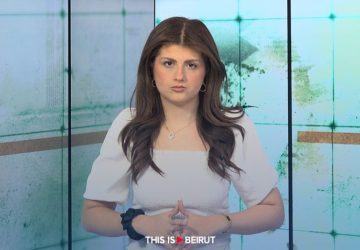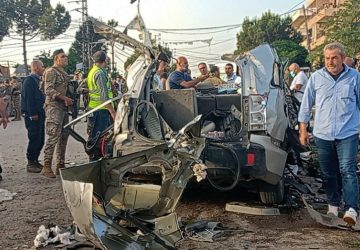Listen to the article
It has been relegated to oblivion, this story of two states existing side by side. It took a long time, a show of force from Hamas and tens of thousands killed in Gaza for world leaders to wake up, probably under the pressure of their outraged populations. Yet, it is still only in the form of scattered statements lacking unanimity. Some are still yawning after their long slumber, while others are hoping for all this noise to settle down quickly enough for them to return to their numbness.
But the idea is eight decades old. It was buried and unearthed countless times, until the official proclamation of a Palestinian State by Yasser Arafat in 1988, a state recognized today by 138 countries. A mutual recognition was formalized in the 1990s with the Oslo Accords, which Israel did not abide by. At one point, there was even a suggestion to create a confederation between Palestine and Jordan, first proposed by one but rejected by the other, then vice versa.
That said, we will leave this labyrinth (including the future of refugees and colonies …) to the political scientists and focus on the aspect that interests us in this economic column, with the question that has always been on everyone’s mind: Is an independent and sovereign Palestinian state economically and socially viable?
“Wrong question,” specialists say, only to follow up with another question. “Once you, politicians, have established a Palestinian state, what would be needed for this state to be viable?” A purely rhetorical question since it is generally followed by scenarios of solutions, laid out in numerous reports established by research centers and think tanks.
The most comprehensive study is probably the one published in 2005 by the RAND Corporation, a non-profit American research institute, under the title “Helping a Palestinian State Succeed: Key Findings.” It was so pragmatic that almost all subsequent reports cite it. In short, what can we gather from it?
- First, the territory of the West Bank must be continuous, without obstacles, favoring demographic and economic mobility within the region. It must also be linked to Gaza by a dedicated passage, 90 kilometers long.
- Gaza, already overpopulated and underdeveloped, will not be able to survive in autarky. It will need special treatment and demographic rebalancing with the West Bank. However, access to the sea would give it advantages (port, tourism, fishing, gas) if well exploited.
- Mobility must also be ensured between Palestine and Israel (and Jordan), allowing the exchange of labor, capital, products and services. The “cold peace” option cannot be viable. It should be about good neighborliness, the opposite of Lebanon with its historically detestable neighbors, which have poisoned its life since its independence. The goal is to bridge the gap between Israel with a GDP per capita of $52,000 and Palestine with $3,600.
- This will be possible primarily through new and necessary infrastructure works (electricity, water, telecom, roads …) that will employ tens of thousands of Palestinians and thanks to the money from donors and workers that Israel needs.
- In the absence of significant natural resources (pending potential gas off Gaza), the bet must be on Palestinian human capital, both within the state and from a highly educated large diaspora, plus a range of Palestinian-origin millionaire and multinational companies.
- However, even with a very partial return of refugees, this Palestine will be one of the densest in the world, with all the problems that this entails. Not all refugees (and diaspora) will be able to return, assuming they want to. But they will at least have a passport issued by their state. It would be somewhat similar to the Lebanese, half of whom live elsewhere, by choice.
- That said, population pressure can be countered by considering density models, not of countries, but of cities in the world. Yet even some of the densest cities in the world are not the least performing when well managed.
- That is why RAND studied several scenarios of a master urban plan. And it retained what seemed to be the most viable: an arc connecting the 11 main cities of the territory: Jenin, Tubas, Tulkarem, Nablus, Qalqilya, Sal’it, Ramallah, Jericho, Bethlehem, Hebron … and Jerusalem. Nearly 105 kilometers of continuous urbanization, served by a highway, complemented by a railway line and access roads for each city. A solution that allows for a division between a rather urban region and a rather rural one.
- But all of this requires a substantial amount of funding, both from private funds coming from Palestinian expatriates themselves and from international aid. According to the scenario in the RAND study, the required contribution amounts to about $60 billion over 10 years (the figure was updated according to the value of the dollar in 2023), roughly the average aid to countries coming out of war … and much less than that granted to Ukraine, even though we are not yet in the reconstruction phase.
The Rawabi Prototype
Let’s conclude with a unique development case, the Rawabi project, led by a single man, Bashar Masri, a Palestinian-American billionaire, aided by a sovereign fund from Qatar. It is a high-tech new city project worth $1.4 billion, located between Birzeit and Ramallah. The project is supposed to accommodate 40,000 people, 6,000 homes, light industries, a technology center and a panoply of facilities.
Construction began in 2010, but the project has been dragging on due to continuous Israeli hindrances. Permits were required for each stage, and obtaining a water supply took years of negotiations. Additionally, the road to access it could be cut off by the Israeli army at any time.
Currently, the city is filled with only one-tenth of its projected capacity, but for Masri, it is a long-term project. “If we (Palestinians) can build a secular and modern city, we will also be able to build a state.” Symbolically, the Palestinian flag flying there at a height of 24 meters extends over an area of 14 x 8 meters. On a clear day, it is visible from the dual capital Jerusalem, which is 37 kilometers away.





